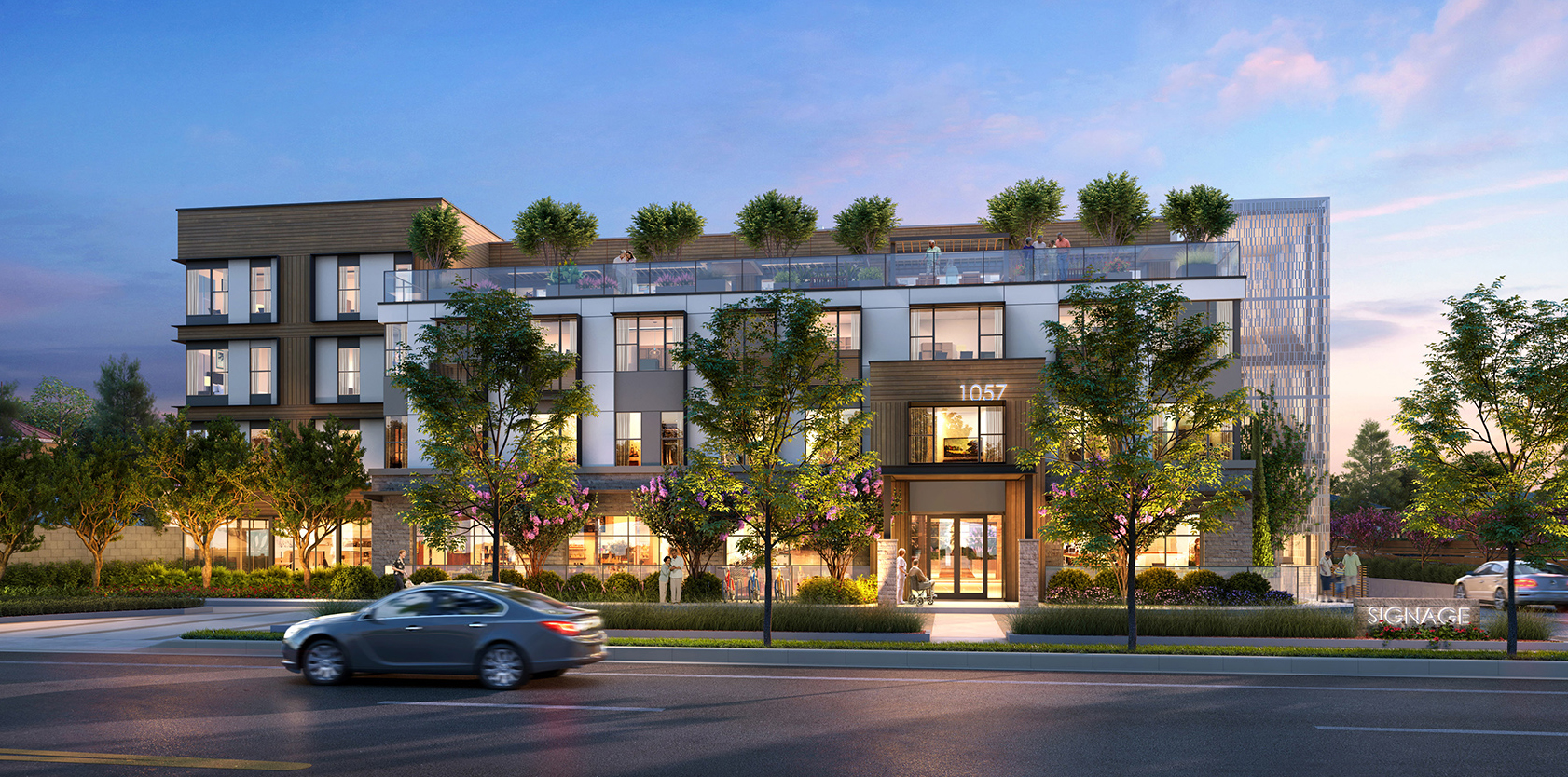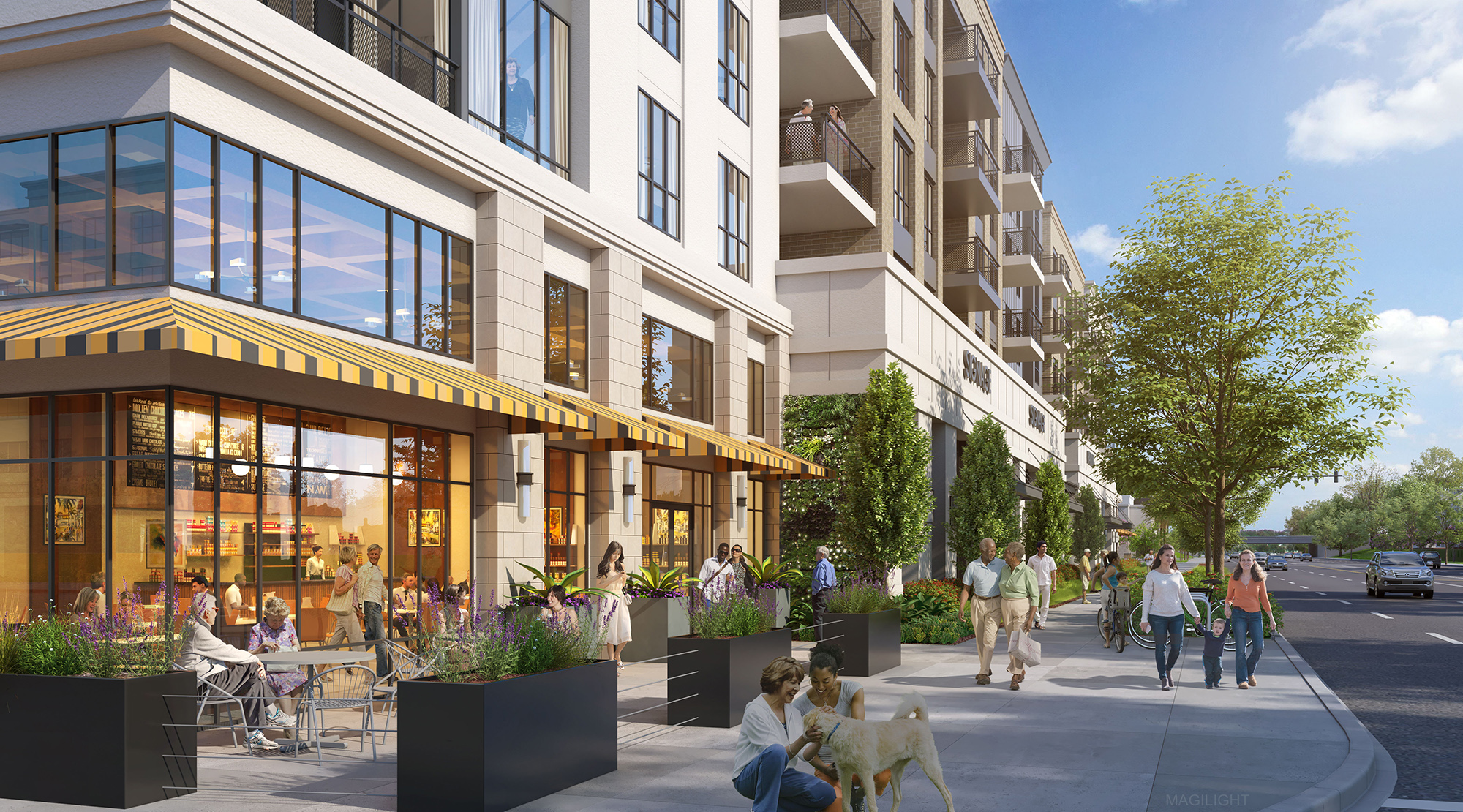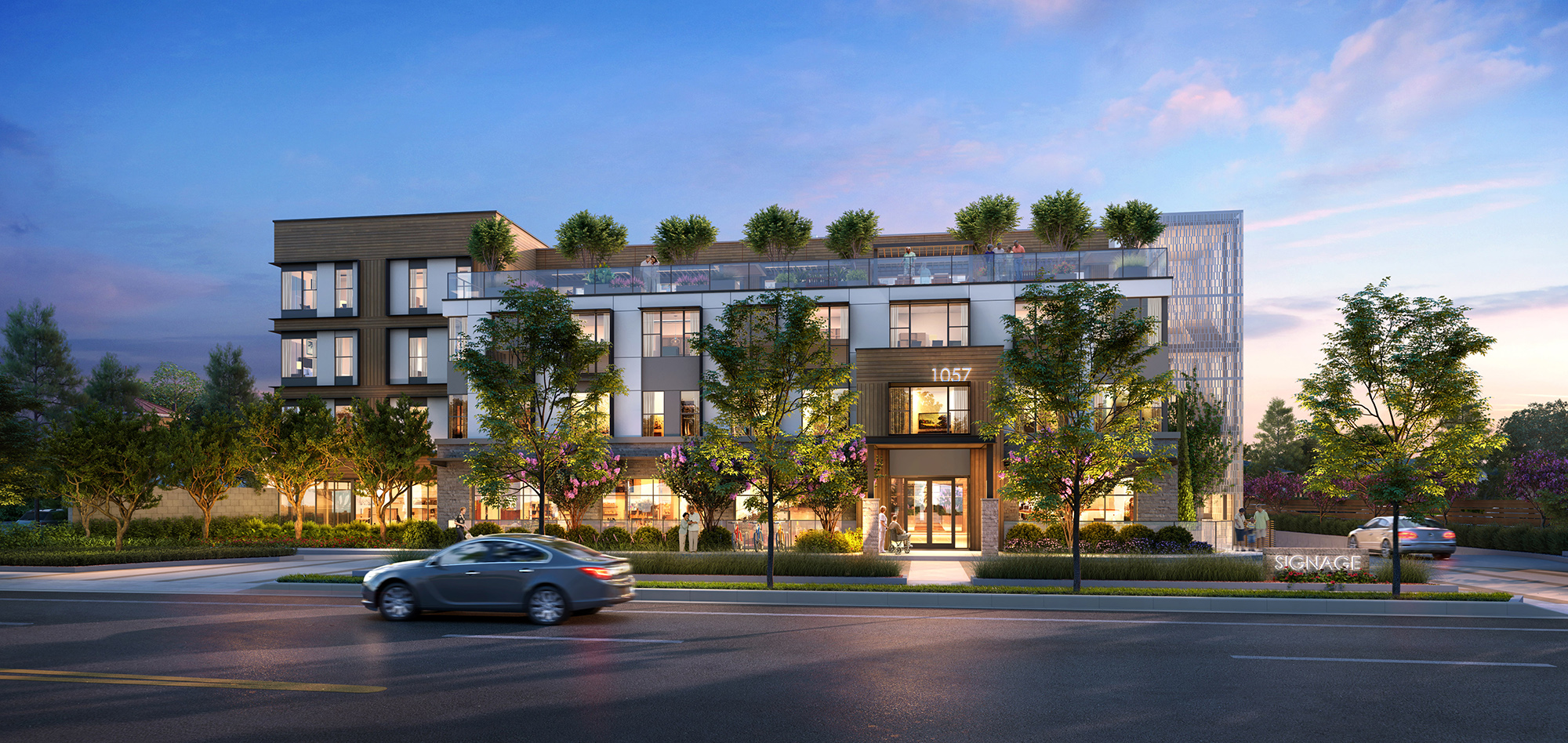Irish playwright George Bernard Shaw once said, “We don’t stop playing because we grow old. We grow old because we stop playing.” Although this quote is over 100 years old, it couldn’t be truer today. This sums up the mindset of so many that are moving into senior housing communities. They want to continue to play, to live life, and to have new experiences. They don’t see themselves retiring to a suburban campus. In fact, a 2017 survey conducted by Welltower found that 80 percent of boomers currently living in a city want to stay in that city when they are 80+ years old. Thoughtfully designed infill senior housing can provide this opportunity.
The resident reaps many benefits when living in an urban setting: First, a resident can live in the same neighborhood as they have for years. Even though they won’t get out quite as much, there is comfort in being in a familiar place where they lived their entire life. They can attend the same church, go to the same theater, see the same friends and more. They can also be close to family. Studies have shown that the closer a senior community is to where younger family members live, work, shop and play, the more likely the seniors are to receive consistent visitors. With social isolation being such a serious issue for older Americans, having these communities in the right place can be a lifesaver.
The right location will also have amenities for residents to enjoy right outside their front door. The greater community affords residents entertainment, shopping and dining opportunities. It also gives the ability for intergenerational connection, which is a huge benefit for both the young and the old.
This all adds up to a better quality of life. The National Library of Medicine did an extensive study on the quality of life of seniors living in rural versus urban environments. The study found that both the quality of life and the health-related quality of life are substantially higher for those that live in urban settings. It went on to say, “The lower scores in rural areas suggest that rural older adults may be socially isolated. Older rural adults may need interventions to maintain physical and mental health, strengthen social relationships and support, and increase their participation in the community to promote quality of life.”
In addition to these benefits to the residents, there are also advantages to the surrounding community:
First, senior housing is an extremely low-impact use. Although there may be a lot of people living in a building, most of them don’t drive. Much of the traffic comes from staff, but operators plan their shift changes around peak hours, so traffic impacts are almost negligible. There is also little impact on schools, parks, and even utilities based on the resident profile.
Senior housing is also a job creator. Depending on the size of the community, there can be upwards of 100 people employed This includes a variety of jobs and skill sets such as marketing, accounting, community directors and activity directors. There are also jobs for service workers: housekeeping, maintenance, janitorial and kitchen/wait staff.
Although the benefits of being in an urban location clearly outweigh the challenges, careful and thoughtful design is needed to avoid potential pitfalls. The first of these is security. As we design in more urban locations to encourage interaction with the overall community, we need to be very careful about access points. Even though the line between public and private should feel permeable, there needs to be a clear distinction between the two and a limited number of entries located in visible areas. As designers, we also need to be sensitive to noise and lights that may be generated from a more urban location. Not only can the issue of noise and lights be a nuisance, but in the case of memory care, it could cause residents to become agitated and lead to adverse health effects. Special attention needs to be given to where units are located and views from primary windows during concept design.
I genuinely believe that urban infill senior housing communities are the wave of the future. And, when thoughtfully done, it is clear that there are numerous benefits to the residents and the greater community. Those of us in the industry have a duty to create spaces in prime locations that allow residents to continue to play. After all, who wants to get old?




